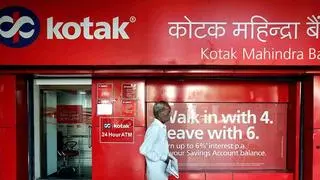Indian banks that made a mad dash to raise capital through Basel III compliant bonds in recent years, could face challenges in tapping this route in the near term. After the RBI moved to write down YES Bank’s ₹8,400 crore Additional Tier 1 (AT1) bonds in the beginning of the year, it has now advised the writing down of Tier 2 bonds of Lakshmi Vilas Bank (LVB) amounting to ₹318.2 crore, before its merger with DBS Bank India (on November 27).
A full-write down implies that investors in these bonds will not receive anything, just as equity shareholders in LVB. The RBI writing down such bank bonds, in quick succession this year, has not only left investors in the lurch but also raised questions over the true assessment of risk and pricing of these bonds.
But what are these bonds? Why have investors been caught unawares if the ‘loss absorbency’ clause is clearly laid down in the regulations and term sheet of these bonds?
Principal-loss absorption risk
Basel-III-compliant AT 1 bonds come with a built-in ‘loss absorbency’ clause which means that in case of stress, banks can write off such investments or convert them into equity. The principal loss absorption (through write-down or conversion into equity shares) can be triggered by pre-specified trigger of CET1 falling below 5.5 per cent before March 2019 and 6.125 per cent thereafter. At the instance of the RBI, bonds can also be written down upon a point of non-viability (PONV) event happening.
In case of Basel III Tier 2 bonds, the principal can be fully written down at the PONV.
The PONV trigger event is the earlier of a) decision that a conversion or write-off, without which the firm would become non-viable, is necessary, b) decision to make a public sector injection of capital, or equivalent support, without which the firm would have become non-viable.
The norms also state that if the authorities decide to reconstitute a bank or amalgamate a bank with any other bank under Section 45 of BR Act, 1949, then such a bank will be deemed as non-viable or approaching non-viability.
The RBI had written down YES Bank’s AT 1 bonds triggered by the PONV event.
In case of LVB, too the RBI has stated that “given that Section 45 of BR Act, 1949 has been invoked and the Scheme notified, the bank is deemed to be non-viable or approaching non-viability and accordingly, the triggers for the write down of Basel III Tier 2 bonds issued by the bank has been invoked”.
AT1 vs Tier 2 bonds
While both Tier-1 and -2 instruments have significant loss-absorption features, the former are meant to absorb losses on a going-concern basis — the loss-absorption trigger kicks in fairly early (CET1 falling below 6.125 per cent). Hence, the high loss-absorption features of Tier-1 bonds can bail out depositors as well as investors in Tier 2 bonds, well ahead of a crisis or stress.
The relatively lower risk in Tier 2 bonds compared to AT 1 bonds is reflective in the ratings of these bonds. Ratings for tier 1 instruments are notched down by both domestic and global rating compared to ratings assigned to the Tier 2 bonds.
Care ratings had assigned B- rating to LVB’s Tier 2 bonds as of October (Series VIII – ₹78.10 crore, Series IX – ₹140.10 crore and Series X – ₹100 crores). A ‘B’ rating implies instruments with high risk of default.
YES Bank’s AT-1 bonds were rated AA when they were issued, but were downgraded to BBB- in February this year and finally to D.
False comfort
While the regulations clearly state the risk associated with these bank bonds, investors had been taking comfort in such loss absorbency clause not being triggered yet. In the past, even rating agencies have stated that the PONV trigger is a remote possibility in the Indian context, as timely intervention by the RBI will avoid a situation wherein a bank becomes non-viable. But the RBI has now set a precedence by writing off AT 1 bond and Tier 2 bonds of two banks this year.
Investors have also drawn comfort from the ratings that most of these bonds have been enjoying up until now. A look at the ratings of AT-1 bonds across Indian and global banks, compiled based on Bloomberg data (flagged in our story AT-1 bonds: Have Indian rating agencies been less prudent than global counterparts? ), suggests that there is a three-to five-notch difference between the rating of AT-1 bonds issued by Indian banks and global banks. While rating of AT-1 bonds issued by global banks is notched four-five times below the bank’s overall viability rating, Indian rating agencies notch down the rating by only one or two levels in most cases. Ratings of Tier 2 bonds is 1-2 notches above AT 1 bonds of a bank (2-3 notches in case of global banks).
The RBI had opened up these bonds for retail investors about six years ago, with certain conditions that ensured investors were well educated of the ‘loss-absorbency’ risk of these bonds. But after the YES Bank episode — which brought out the issue of huge misselling in these bonds — SEBI recently moved to restrict retail participation in AT 1 bonds. Now, only QIBs are allowed to participate in AT 1 bonds (minimum allotment of not less than ₹1 crore).
A similar clampdown on Tier 2 bonds, after the LVB fiasco, is likely in the near future.









Comments
Comments have to be in English, and in full sentences. They cannot be abusive or personal. Please abide by our community guidelines for posting your comments.
We have migrated to a new commenting platform. If you are already a registered user of TheHindu Businessline and logged in, you may continue to engage with our articles. If you do not have an account please register and login to post comments. Users can access their older comments by logging into their accounts on Vuukle.